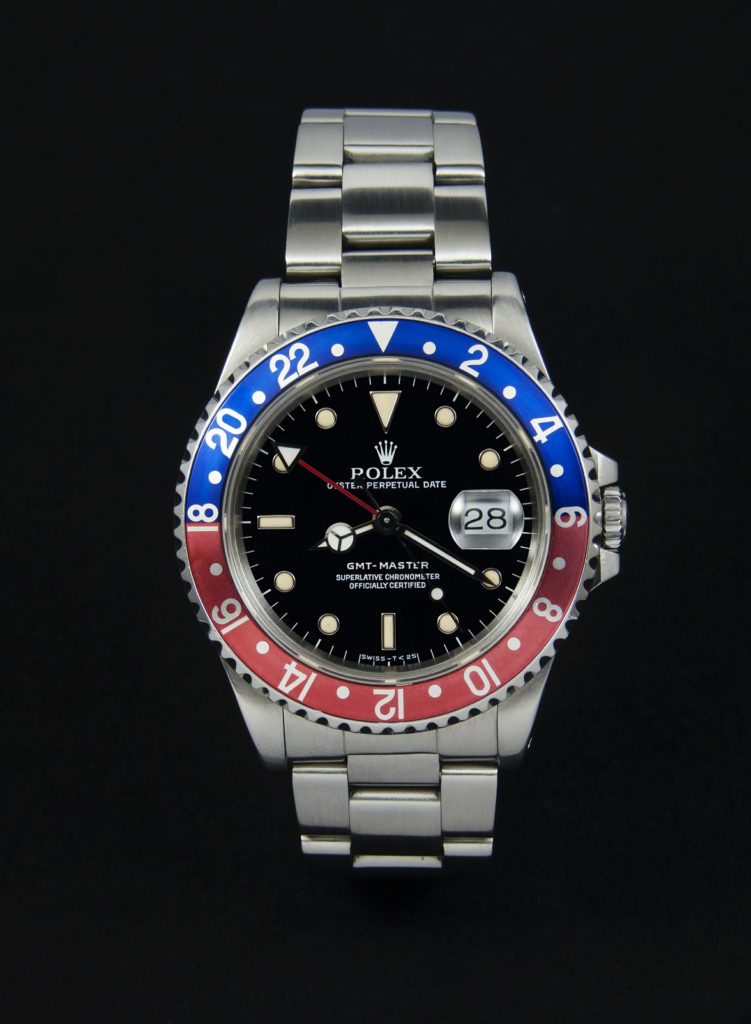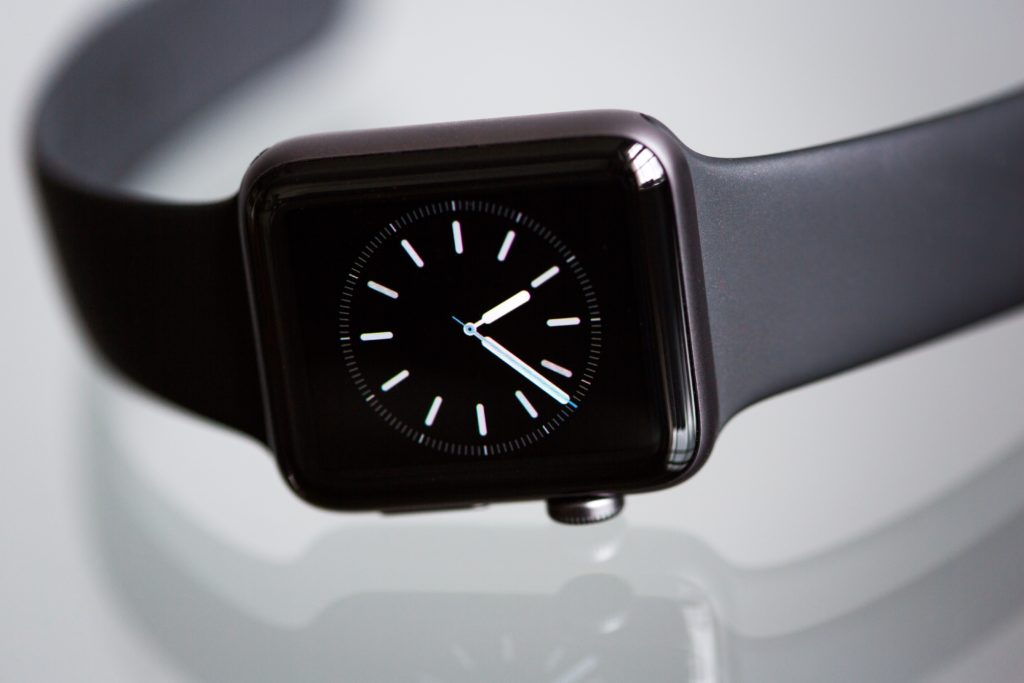In this day and age, wearing a watch to tell time may seem like an antiquated idea. Watches have become more than just a simple timepiece—many of them are smart little computers for the wrist. They track our activity, give us directions, and keep us connected to the world. But do they also give us something else: wrist pain? If you are experiencing ongoing wrist pain you should consult a doctor for advice!
Wearing a watch can cause wrist pain if the piece is worn too tightly or placed incorrectly on the wrist. Repetitive stress and compression on the nerves in the wrist can create nerve damage that leads to tingling and numbness in the wrist and hand. The pain may even radiate up into the shoulder.
Wearables that aid us in many areas of the modern, fast-paced life are quickly becoming a must-have, not just a want-to-have. If you wear a regular watch or smartwatch or are thinking about getting one, take a minute or two to discover the facts around the possible connection between watches and wrist pain.
Does Wearing a Watch Cause Wrist Pain?
On the face of it (pun totally intended!), “wearing a watch” and “pain” are not two words you’d expect to be used in the same sentence. Traditional watches have not typically been known to be pain-inducing pieces if worn correctly and comfortably on the arm. If anything, a wearer might experience some perspiration under the watchband that results in the watch sticking to the arm for a short time.
However, there have been reports from smartwatch owners of wrist pain and even arm or shoulder pain recently. The pain is often described as tingling, numbness, and deep aching.
This pain seems to be a new phenomenon, and users are lighting up the customer support forums for Apple, Samsung, Garmin, and Fitbit, the big names in wearable devices, the latest catch-all term for smartwatches and fitness trackers.
The pain these customers experience varies but seems to have a common theme: nerve pain resulting in deep aching and radiating pain. Comments on an Apple forum and a Samsung discussion board include:
- “aching pain which is deep in my wrist and radiates up my arm”
- “the side of my hand near my knuckles and pinky finger hurt”
- “extreme wrist and joint pain, and I even felt it in my knuckle”
- “wrist is very sore and weak”
- “my wrist aches and pain shoots up to my elbow and down to my pinky finger”
- “some shock kind of pain”
- “slight pinching pain in my left medial deltoid muscle”
How Do Watches Cause Wrist Pain?
Having wrist pain while you wear a watch or pain that lingers after the wearable device is taken off is annoying and uncomfortable at best. At worst, though, the daily, repetitive nature of watch-wearing can lead to long-term consequences for the wrist, hand, and even arm or shoulders.
Let’s take a look at a few reasons your watch could be causing you pain:
The Watch Is Worn Too Tightly
Wearing any kind of watch or wearable device too tightly increases the chances that the wearer will experience nerve damage that leads to pain in the wrist, hand, and arm.
A good rule of thumb is that you should be able to slip one finger between your arm and the watchband, and your watch should not slide more than an inch up or down your arm.
Wearing a watch too snugly compresses the nerves in the wrist area. If this compression goes on for an extended period (like when you wear your smartwatch 24/7), you may soon see nerve pain symptoms appear: tingling and aching.
With no relief from the nerve compression, actual nerve damage may result, and you may feel pain, numbness, tingling, and muscle weakness in the hands.
The Watch Is Worn in the Wrong Place
Where you wear a watch is a matter of personal preference, but its placement can have unintended consequences. The best way to reduce wrist pain from wearing a watch is to ensure that you are wearing it properly on your arm.
Ideally, your watch should sit on your arm, just above the wrist bones — not directly on the bones themselves. (A good way to judge the placement is to fit two fingers between your watch and your wrist bones.)
Wearing a watch too high and on top of the wrist joints can damage the delicate pisiform bone. It’s one of the eight carpal bones that form the wrist joint.
Prolonged Wear Can Irritate the Skin on the Wrist
Wearing any kind of watch or fitness tracker 24/7 is just not a good idea. Prolonged contact with your skin can lead to skin irritations or, in some cases, allergic reactions.
- Moisture – The wrist is near your hands, which frequently get wet with handwashing, dishwashing, or showering. Sweat and dirt can linger underneath the device too. Excessive moisture can degrade the skin under the device and ultimately lead to painful skin conditions.
- Allergic Reactions – Many wearable devices contain traces of known allergenic materials such as nickel or gold. Users who are allergic to any of the materials used in the watch or its band can experience painful reactions or chronic itching and scaliness when their skin stays in extended contact with the material.
Does EMF Radiation from a Smartwatch Cause Wrist Pain?
EMF radiation from wearable devices is not known to cause wrist pain or have any long-term effects on your health.
EMF, or electro-magnetic frequency, radiation is emitted by many of the modern devices we use frequently, even daily—cellphones, fitness trackers, smartwatches, sports watches with GPS, and virtual or augmented reality devices. So, like it or not, you face EMF exposure regularly.
The low-powered radiofrequency transmitters found in these devices let them communicate and send data over the internet. The Federal Communications Commission (FCC) has set exposure limits on the amount of EMF radiation that can be emitted from wearable devices.
Excessive EMF radiation is known to cause headaches and nausea. However, numerous studies have shown that there is significantly less radiation coming from a wearable than from a cell phone. The consensus is that this is not a cause for concern, but the research is ongoing.
Can Wearing a Watch Cause Carpal Tunnel?
It’s possible that wearing a watch incorrectly could compress the median nerve and cause carpal tunnel syndrome. If that’s the case, then not wearing the watch is not likely to fix the problem, and the symptoms will remain and get worse with time.
According to WebMD, carpal tunnel syndrome (CTS) is caused by compression of the median nerve, which goes the length of the arm and into the hand through a small opening (the carpal tunnel) in the wrist. CTS is most often caused by repetitive motion, wrist injuries, nerve-damaging or inflammatory conditions like diabetes or arthritis, and even anatomical design.
Symptoms include tingling, numbness, shock-like feelings in the fingers, and weakness in the hand. Pain can sometimes radiate into the shoulder. Over time, carpal tunnel symptoms worsen for most people without some type of treatment.
But, most folks who’ve experienced wrist pain with their watch find that it goes away once they stop wearing the watch or begin to wear it properly. This would indicate that their problem is not carpal tunnel syndrome but a neuropathic one that mimics CTS.
Will Wearing a Watch Make Carpal Tunnel Worse?
With more and more people parked in front of a computer every day, typing and mousing, carpal tunnel has become quite common. Since CTS symptoms are similar to the wrist pain caused by wearable devices, it’s understandable that those who suffer from CTS might wonder whether their watch aggravates their CTS.
No research indicates that wearing a watch causes carpal tunnel syndrome to flare up. While it does fall into the repetitive category since most folks put their watch on every day or wear it all the time, wearing a watch is not a forceful or vibrating activity and does not aggravate CTS symptoms.
What Should You Do if You Have Wrist Pain?
No one likes to be in pain, and it’s definitely something we all avoid if we can. Something as simple as wearing a watch should not create any reason to give it a second thought once it’s strapped on. But in this article, we’ve seen how wearing a watch can cause unexpected irritation and even pain.
The first step is to work through a process of elimination to determine what exactly is causing the pain. It may take a few wearings or days to figure out if a solution helps the problem or has no effect. Consider trying one or all of these ideas:
- Loosen the band.
- Wear the watch in a different place on your arm.
- Wear the device on the other arm.
- Remove the wearable for increasingly longer times each day. Start by leaving it off for 30 minutes every day. If that doesn’t help, add 30 minutes incrementally until the pain is gone.
- Discontinue wearing the watch at all for several days or a week.
- Change to a different brand of wearable device.
- For apparent allergic reactions to a Fitbit watch, cover the charging pins with some tape so that the metals used there don’t contact the skin.
- For skin conditions, be sure to keep the area under the watch dry. Use a medicated sports powder like Gold Bond if necessary.
Unfortunately, some smartwatch users have discovered that the pain only occurs when they are wearing the device. At that point, many have to make a choice: continue to wear the watch, deal with the accompanying pain, and risk further damage to the wrist, hand, or arm, or stop wearing the watch altogether.
How to Reduce Wrist Pain from Watch Wearing
The Fitbit website offers four simple ways to avoid or lessen any pain from using a wearable device:
- Keep the area clean.
- Keep the area dry.
- Don’t wear the device too tight.
- Rest your wrist by removing the band for at least an hour after extended wearing time.
It should go without saying (but we’ll say it anyway): if you ever experience numbness, tingling, aching, or stiffness during use or after using a wearable device, take it off immediately.
If you’re already having wrist pain from wearing a watch or fitness tracker, there are things you can do at home to alleviate the discomfort. The Cleveland Clinic offers several ways to deal with wrist pain. These are recommended specifically for carpal tunnel syndrome, but since the symptoms are similar to the pain that can come from wearing a watch, it’s worth trying them if you’re experiencing discomfort:
- Apply ice to your wrist for about 10-15 minutes every hour. Using either an ice pack or an ice bath will work well.
- Keep your wrist aligned properly by using a wrist splint that can be bought at a local pharmacy.
- Take over-the-counter anti-inflammatory medications like ibuprofen or naproxen. Only take these as directed on the packaging.
- Gently shake out your wrist throughout the day.
- At night sleep with your wrist hanging over the side of the bed.
- Three to four times per day, put your hand in a bowl or sink of warm water (92°-100°) and gently move and flex your hand and wrist.
If you still have wrist pain after trying to pinpoint the source of the pain and alleviate it at home, it is time to make an appointment with your doctor. It’s possible that your wrist pain is not connected to wearing a watch or fitness tracker at all.
Final Thoughts
Wearing a smartwatch or fitness tracker without ever taking it off makes you susceptible to wrist, hand, and finger pain. If you’re wearing your watch longer than the suggested amount of time, it would be wise to adjust how often you use it and make sure not to overuse it. Also, if you find yourself experiencing pain from using your smartwatch, consider taking a break now and then!
Further Reading:







